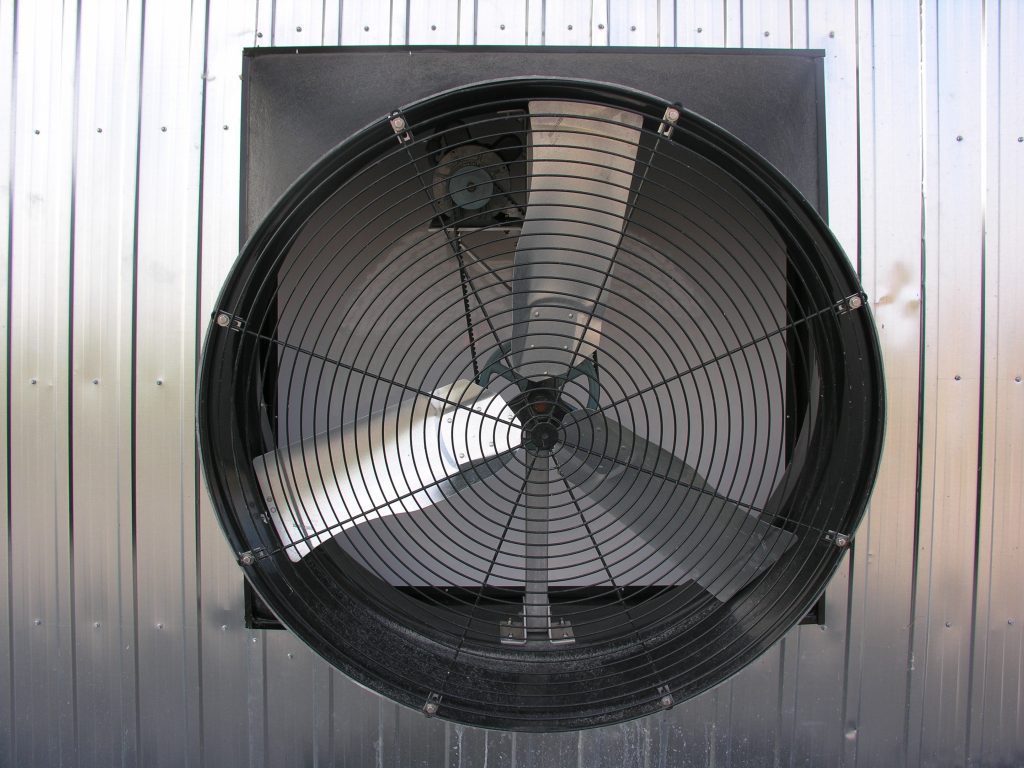
Ventilation in poultry houses during breeding
By Yanfeng Guo Amy Stanley Paige Swinston and Filmon Tzeggai University of Alberta
Features Equipment New Technology Poultry Equipment Production Poultry Production Production he primary goal of ventilation is to maintain optimal air exchange and distribution, thus promoting productivity and influencing economic output.
he primary goal of ventilation is to maintain optimal air exchange and distribution, thus promoting productivity and influencing economic output. Apr. 18, 2013 – In poultry, ventilation is defined as the dilution process that occurs when fresh air enters a barn through an inlet. It is one of the key components used to control temperature, gases and relative humidity, as well as to reduce odors and dust. The primary goal of ventilation is to maintain optimal air exchange and distribution, thus promoting productivity and influencing economic output. Air circulates with the gaseous compounds and excess humidity, diluting their concentrations. This circulated air then leaves a barn via the negative static pressure formed from the pull of exhaust fans.
Specifically, there are a few guidelines that should be considered to maintain adequate barn environment. These include a temperature range of 18-22C, a relative humidity range between 50-70 per cent and an air speed of 8m/s at the inlet. The volume of air exchange should range from 1-2 L/second/bird, and the ventilation rate should range from 0.16-1.5 L/second/metabolic weight of a bird at the exhaust fans.
There are a variety of ways to measure the environmental factors involved with ventilation. A thermometer, which measures temperature, and a humidistat, which maintains relative humidity, are a couple of the simplest tools used. Once these numbers are identified in your barn, you can adjust accordingly to match the guidelines provided above. Some other examples include a manometer, which measures the negative static pressure in a facility and can be used to illustrate barn tightness. If there is an air leak in your barn, it will be indicated by a decrease in negative static pressure. The air will drop to the ground instead of circulating with air present. This air drop can decrease the overall temperature which can increase the heating requirements by as much as 30 per cent.
As well, there are a few tools that measure air speed: an anemometer and smoke pencil. They can be used to determine the air speed circulating through your barn, which can be adjusted by the degree of inlet opening. Ammonia strips measure ammonia levels in the air, which should not exceed 25ppm. Studies have shown that continued exposure to ammonia can decrease a person’s sensitivity to the gas. With time, a person with decreased sensitivity will no longer be able to detect ammonia until concentrations reach levels of 50-60ppm or higher. Ultimately, utilizing these simple tools can assist you in determining if ventilation is at an adequate level for optimal broiler breeder production.
Now you may ask, since ventilation is key to long-term production, what can I do about it?
Well there are a few quick techniques or upgrades that have the potential to manipulate ventilation quality in your barn. Some ideas include a litter guard that captures water from the water line. These litter guards, decrease litter moisture as well as relative humidity in a facility. Another tool that could be changed or upgraded is the furnace or heating system. Over time, furnaces can mechanically degrade, thus influencing your heating costs. In electrical heaters, corrosion of the electro-mechanical contact points is a common problem.
Rodent control can also be useful in manipulating ventilation. Pests can easily destroy equipment such as fan cords and, over time, the damaged equipment may limit the overall efficiency of a barn. Another control that could be implemented is the addition of recirculation fans to maintain air mixing and quality. This is significant during winter conditions, when inlets must be open at minimum to prevent the barn from getting too cold. If there are no additional recirculation fans, air cannot mix adequately causing the relative humidity in a barn to increase. This results in condensation on the walls and absorption of moisture into the litter as well as uneven distribution of temperature throughout the barn. The extra fans assist in mixing the fresh air coming into the barn with the air already present, thus preventing excess humidity and the air drop discussed earlier. Depending on the size of the barn, extra fans should be located along the perimeter near the ceiling to promote circulation within the barn to maintain dilution. Although specific to broiler breeders, methods for manipulation of ventilation can be used in other poultry facilities.
At the other extreme, during summer conditions the inlets should be open at maximum to allow for optimal air exchange in the facility. Air moving through the barn is important to remove the stagnate heat that has accumulated from the birds’ sensible heat loss. It should be noted that ventilation rate at the exhaust fans should be higher to maintain the static pressure in the facility. This can, however, result in relative humidity being to low, which can be seen by dust accumulation.
Poor ventilation, which is defined as improper air mixing within a facility, can not only decrease the quality of air and litter in the barn, but can also limit broiler breeder performance. It has been shown that poor quality air can impact respiratory health via activating the immune system and can cause chronic inflammation. The birds would then have to expend extra feed energy to control inflammation, meaning that less energy would go towards maintenance and production, more specifically, hatchable egg production.
Good management and a few simple changes can have a huge impact on your ventilation and subsequently production economics. Implementation of measurement tools to determine environmental factors influence overall ventilation rate and a quick response to any noted deficiencies can be useful for promoting breeding success.
For more information on ventilation, please visit http://albertahatchingeggs.ca.
Print this page